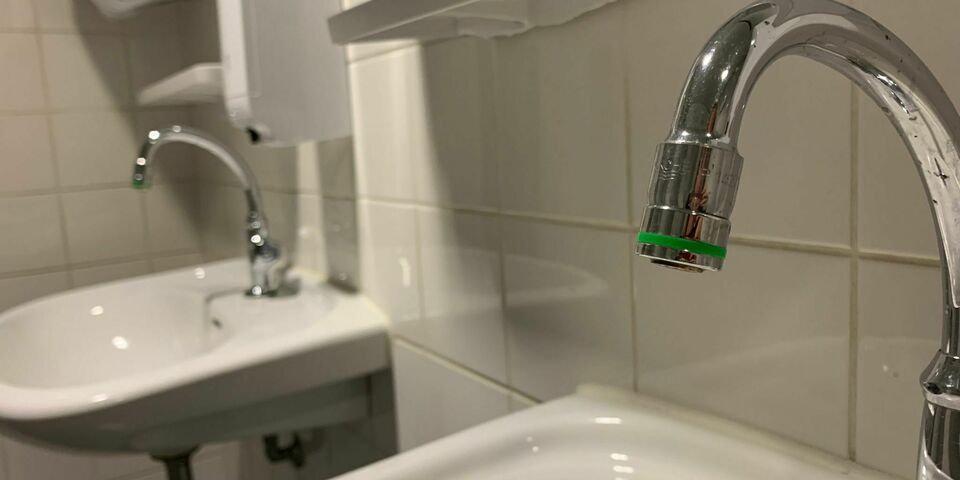Pilot for water-saving faucets on campus
The Auditorium is being used for a pilot with water-saving faucets. Real Estate wants to see whether this is worthwhile, and if the answer turns out to be ‘yes,’ there’s a chance that it will become a university-wide implemented measure. So far, there have been a few challenges.
Jan-Willem Schellekens, head of projects and maintenance at Real Estate, explains those challenges. “People still remove the water-saving nozzles from the faucets too often. We need to solve that problem first, or else it won’t work, obviously. We suspect that people remove the nozzles to fill their drinking bottles, because that takes much longer when you leave the nozzle on. People can fill their bottles at the join-the-pipe filling point in the canteen at the Auditorium. We will also ensure that there will always be one faucet in every toilet group where people can fill their bottles. We hope that this prevents people from removing the nozzles.”
This is by no means the first recourse-efficient measure at TU/e. “Real Estate is continuously looking into possibilities to optimize water, electricity and gas consumption. You always try to find the low-hanging fruit first.” Water-saving faucets could be an example of such an initiative, Schellekens believes. He says that he hasn’t received any responses from users of the Auditorium so far.
Water-saving lab setups
“Apart from the water-saving faucets, some toilets have also been fitted with a water-saving flush system, but that’s a different project,” Schellekens says. “The water-saving measure that really made a difference on campus is the one applied to the lab setups. In the past, these setups were cooled with water, and we managed to significantly reduce water consumption over the past ten years by connecting these setups whenever possible to a cooled water network instead of to drinking water.”
This system keeps the water, and consequently the setup, cool in an environmentally-friendly way, Schellekens says. “It’s a closed system, meaning that the water doesn’t end up in the sewer. The system that cools the water is connected to the Heat and Cold Storage (ATES) installation on campus. This allows us to store cold water underground during the winter months, which we can use for cooling purposes during the summer, as well as the winter.”


Discussion